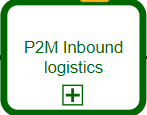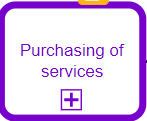Definition
Sales orders are typically supplied from existing stock, and production orders are used to replenish those stocks. The scenario starts with the creation of production orders for large quantities of standardized products based on the plans and ends with a production of all quantities of the product required by the plan. The scenario is applied for discrete manufacturing and can't be applied for continuous manufacturing. Each production stage can be individually started, postponed, the lot can be changed at any moment of production. Discrete manufacturing requires a multistage production process with numerous interdependent steps to make a specific product. The complex structure of a product required defining a complex product bill of material, routings, and operations with defined materials. The production is done in several stages with many intermediate products which are used in other intermediate or finished products. Very likely, the make-to-order/assemble-to-order and make-to-stock scenarios can be combined. Intermediate products are made in stock, while finished products are made The scheduling focuses on maximization of output by ensuring maximization of machine utilization and optimization of production lot sizes.
The scenario describes the production process following the make-to-stock model, where products can be and usually made before a sales order confirmation.
Legend
- a process group the process belongs to - a typical business process - a typical E2E business process scenario - a typical E2E business process cluster
Scenario Diagram
Business processes list
- Generate production order based on plan
- Create production stages in make-to-stock scenario
- Schedule production orders
- Control availability of materials for production
- Release production order
- Follow-up production order progress
- Prepare shopfloor papers
- P2M From warehouse to production logistics
- Perform production
- Confirm production
- P2M From production to warehouse logistics
- Consume materials for production



